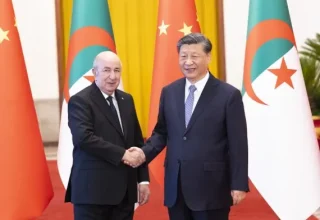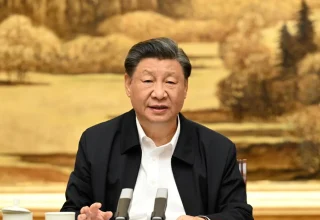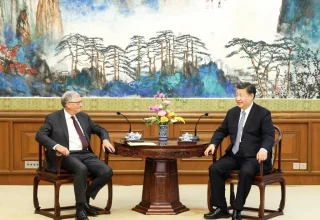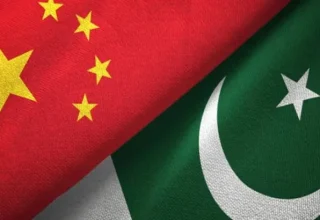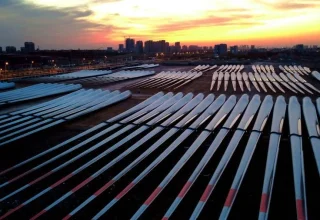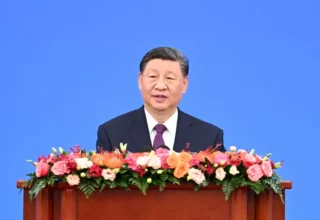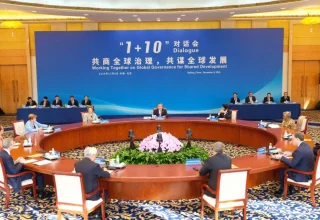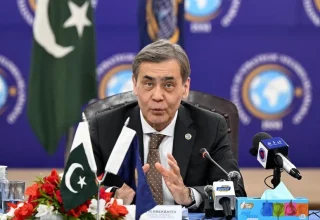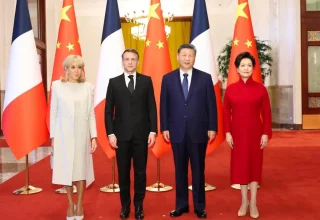
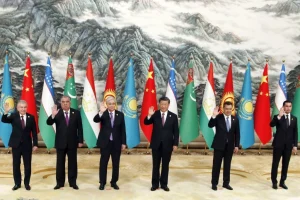
Most recently, China-Central Asia Summit was held in Xi’an during which the Chinese President Xi Jinping delivered a keynote speech. Xi pinpointed numerous X-factors for achieving the desired goals of greater regional connectivity, immense socio-economic integration, eradication of terrorism in the region.
It seems that Xi’an, the city of human wisdom, hub of business & commerce, connecting point of multiculturalism and starting point of trans-regional commerce and connectivity injects multilateral clean stream while Hiroshima dumps political sewage. Xi’an, China, receives presidents from five Central Asian countries, namely Kazakhstan, Kyrgyzstan, Tajikistan, Turkmenistan, and Uzbekistan which vividly reflects diversification of the Chinese foreign policy in depth of its economic diplomacy.
Xi’an, the starting point of the ancient Silk Road, witnessed the ancient route shine with new vitality during the successful holding of the high-level China-Central Asia Summit. Xi’an remained an ancient capital of 13 dynasties in China and also the starting point of the ancient Silk Road that went through Central Asia to Europe. Over 2,100 years ago, Chinese envoy Zhang Qian was twice sent to Central Asia on missions of peace and friendship. The Silk Road spirit has become a great heritage of human civilization which has been reconstructed in the city of Xi’an.
In this regard he rightly suggested promotion and implementation of the holistic policies of Community with Shared Future, Global Development Initiative, Global Security Initiative and Global Civilizational Initiative for achieving the desired goals of regional peace, stability and harmony between China and six countries of Central Asia.
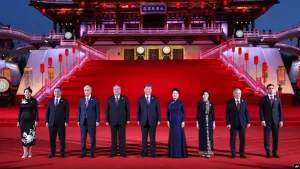 By delivering a keynote speech and covering all aspects of emerging socio-economic, geopolitical and geostrategic dimensions in the ongoing China-Central Asia Summit the Chinese president Xi in the city of Xian, the connecting hub of the Chinese BRI, both have become new epicenter of regional peace, stability, harmony and of course greater regional connectivity. Both become gravitational forces to change the geography, geopolitics, and geology of the Central Asia in the days to come.
By delivering a keynote speech and covering all aspects of emerging socio-economic, geopolitical and geostrategic dimensions in the ongoing China-Central Asia Summit the Chinese president Xi in the city of Xian, the connecting hub of the Chinese BRI, both have become new epicenter of regional peace, stability, harmony and of course greater regional connectivity. Both become gravitational forces to change the geography, geopolitics, and geology of the Central Asia in the days to come.
Interestingly, Xi and Xi’an stand for greater regional peace, progress, prosperity, positivity and participation which would further amalgamate spirits of mutual cooperation, coordination and collaboration between both the sides in the days to come in terms of immense socio-economic integration, health and tourism cooperation, human development and last but not least industrial cooperation enabling all the participating countries to successfully transform their states, societies and systems inching towards smart living and smart economies in the future.
The salient feature of Xi speech was to further strengthen the concept of China-Central Asia community with shared future. Rightly he suggested simple but very effective winning formula comprising of deepen strategic mutual trust, maintaining clear and strong support for each other about respective sovereignty, independence, national dignity and long-term development.
Moreover, he rightly emphasized on the formation of common development strategies between two sides depends upon the further strengthening of meaningful participation in Belt and Road Initiative (BRI) along with promotion of the implementation of the Global Development Initiative (GDI). He also called for joint and sincere efforts to fully unleash cooperation potential in traditional areas such as trade, industrial capacity, energy and transportation, and to foster new growth drivers in areas such as finance, agriculture, poverty reduction, low carbon, health, and digital innovation.
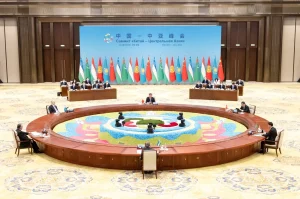
In this connection, his stressing on the need of forming global security system through jointly implementation of the Global Security Initiative (GSI) is the only way forward. Strong resolve against external influence, geopolitical games, geostrategic manipulations to scheme & stage color revolutions should be dealt with zero-tolerance stance against the “three forces” of terrorism, separatism and extremism is the right policy, with right time and with right direction.
To conclude, true spirits and implementation of the newly announced GCI would be carried out to further strengthen good governance, multiculturalism, ethnic diversity and interfaith dialogue between China and the six countries of the Central Asia Region. Interestingly, currently 17 railway routes connect Xi’an with Central Asian countries and many other Asian and European destinations, with more than 1,100 train trips made in the first quarter of the year.
Furthermore, the Chinese proposal to China establish meeting and dialogue mechanisms in areas including industrial development and investment would further facilitate the all-around cooperation between China and Central Asian countries in the days to come. And it would further create win-win situation and propositions form both the parties.
Chinese strong resolve about trade facilitation, upgrading of bilateral investment agreements with Central Asian countries along with overhauling of the cross-border freight volume with Central Asian countries and building of green channel fast clearance of agricultural and sideline products at all border ports between China and Central Asian countries would have far reaching socio-economic and geopolitical consequences.
The Chinese president strong commitment to support the construction of a cross-Caspian Sea international transport corridor and the construction of transportation hubs of China-Europe freight train services will definitely further promote and upgrade capacity of existing ports between China and Central Asian countries. From fully loaded trains to humming production lines and natural gas pipelines, vigorous cooperation has resulted in common development and promoted people’s well-being of all the five countries of the Central Asian region.
According to official data, trade volume between China and Central Asia in 2022 hit a historic high of $70.2 billion, up by over 140 times since diplomatic ties were established about three decades ago. China’s General Administration of Customs published saying that China’s import and export volume with Central Asian countries amounted to 173.05 billion yuan ($24.8 billion) in the first four months, an increase of 37.3 percent compared with same period last year.
Moreover, China’s export and import volume with the five Central Asian countries reached a combined 50.27 billion yuan in April alone, exceeding 50 billion yuan for the first time, marking a new step in trade volume.
For the first four months, China imported energy products, such as coal, crude oil and natural gas, worth of 32.45 billion yuan from the five Central Asian countries, accounting for 55 percent of the total volume.
Green is the way forward along with energy diversification, and cooperation between China and Central Asian countries would be game changer. Formation of green energy corridor would be value addition between both sides in the days to come.
For the further strengthening of business and economic cooperation China will encourage competitive businesses to build overseas warehouses in Central Asian countries which will further accelerate the bilateral and trilateral business cooperation.
Moreover, Chinese readiness to assist Central Asian countries improving their law enforcement, security, and defense capability construction along with reduction of poverty through science and technology would further streamline composition of bilateral ties under the flagship project of the BRI.
Last but not least, the Xi resolution to encourage Chinese-funded businesses in Central Asia to create more local jobs, health care facilities and launching of special train service designed to promote cultural tourism with Central Asia would foster spirits of global civilizational initiative between China and Central Asian Countries.


